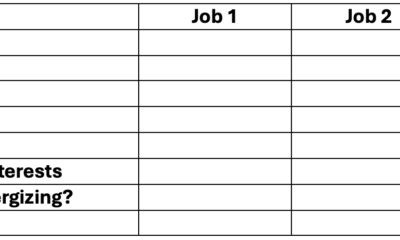Teamwork
3 Hidden Blind Spots Effective Leaders Must Address to Build a Thriving Team Culture

Recognizing and Addressing Blind Spots in Leadership
Every leader, no matter how successful, has blind spots that can impact their team’s trust, engagement, and performance. These blind spots are often invisible to the leader themselves, making it crucial to address them proactively.
The Danger of Blind Spots
Blind spots become more challenging to see as a leader becomes more successful. These gaps in perception can erode trust, morale, and results if left unaddressed. It’s essential to bridge the gap between what a leader thinks is true and their team’s reality.
Three Critical Areas of Blind Spots
There are three critical areas where blind spots commonly occur in leadership:
-
Recognition: The Disconnect of What They Feel
Leaders often believe they provide enough recognition to their teams, but studies show otherwise. Team members often feel unseen and unappreciated despite managers thinking they give enough praise. Recognition is vital for reinforcing behaviors, fostering motivation, and strengthening relationships.
How to Fix it:
- Dedicate time for daily praise to each team member.
- Systemize recognition using tools or schedules.
- Ask for input on how team members prefer to be recognized.
-
Feedback: The Gap Between Giving and Receiving
Feedback is another common blind spot for leaders. While managers believe they provide regular feedback, team members often report receiving little or none. Constructive feedback is crucial for guiding and developing the team, ensuring clarity about expectations and opportunities for growth.
How to Fix it:
- Plan feedback before one-on-one meetings.
- Make feedback a regular practice.
- Improve feedback techniques using models like the “situation-behavior-impact” framework.
-
Collaboration: The Gap Between Teamwork and Synergy
Many leaders pride themselves on building collaborative teams, but without intentionality, collaboration can lead to miscommunication and conflict. Effective teamwork is essential for better ideas, faster execution, and stronger results, requiring psychological safety, clear communication, and mutual accountability.
How to Fix it:
- Ask for feedback on improving collaboration.
- Reflect and adjust after team meetings.
- Build psychological safety by creating an environment for open communication and idea sharing.
Addressing Blind Spots with Feedback and Coaching
Blind spots offer opportunities for growth and development as a leader. Seeking feedback, taking deliberate action, and seeking outside perspectives through coaching or mentorship can help address these blind spots effectively. By being self-aware and addressing blind spots, leaders can create an environment where their team can truly thrive.
Leadership is a journey of continuous learning and improvement. By recognizing and addressing blind spots, leaders can enhance their leadership skills and create a workplace culture where everyone can succeed.
-

 Professional Development1 month ago
Professional Development1 month agoDrawing up your strategy
-

 Personal Growth2 months ago
Personal Growth2 months agoSucceeding as a ‘parentpreneur’: Top tips
-

 Videos2 months ago
Videos2 months agoGreat Leaders INSPIRE Others To Do Great Things
-

 Productivity1 month ago
Productivity1 month agoHow to Increase Remote Work Productivity
-

 Productivity2 months ago
Productivity2 months agoTips for Boosting Work Productivity
-

 Productivity1 month ago
Productivity1 month ago5 Ways to Increase Your Personal Assistant’s Productivity
-

 Leadership1 month ago
Leadership1 month agoHow to Tackle Big Challenges
-
Leadership1 month ago
Cutting Through the Clutter of Internal Communications






























